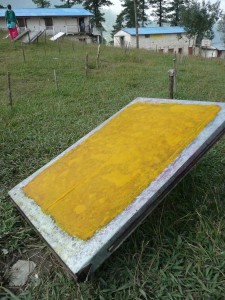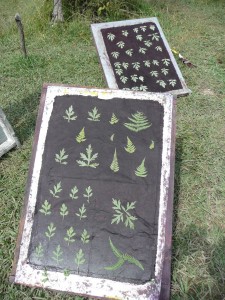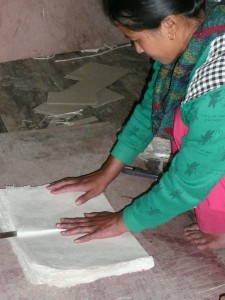In 2002 Chitra spent three months learning paper-making in Kathmandu. He studied the actual process of making the paper from lokta bark and also how to construct notebooks, envelopes and bags. After returning to Nangi there were problems with the quality of the paper. The paper wrinkled easily and the thickness was uneven. The product quality was poor and attempts to sell them in Kathmandu and abroad were unsuccessful.
Chitra told me he was very frustrated because he couldn’t get the information he needed to improve the paper, even from his instructors in Kathmandu or the Institute of Himalayan Conservation that had funded his training. No one seemed to understand the problem. Then one day he heard about a product called neri which is a mucilage substance extracted from the roots of the aibika plant (Abelmoschus manihot). Chitra incorporated this into the paper-making process and finally produced smooth and even sheets of paper.
Despite improving the paper quality he was unable to find a market for the notebooks over the next 4-5 years because the quality of the constructed notebooks was poor compared to the competition. The notebook covers and pages were uneven and there were issues with the dyes. I always thought this gave them a beautiful handmade quality and loved the early books. Most of the sales were to tourists and volunteers visiting the village and didn’t amount to much cash for the school. However it did continue to provide jobs and income for the papermaking women. Even small amounts of income infused into a household can make the difference between a child continuing school or dropping out.
Chitra decided they needed to improve the quality so he sent a few of the women to Kathmandu for additional training in 2008 and it paid off. The quality improved and new markets opened up to make the paper making a successful and sustainable enterprise.
Have you tried to sell a handmade product? Share your successes and challenges with my readers. Join me next week and you will meet some of the former and present volunteers who help sell the products through innovative marketing techniques and grassroots movements.



